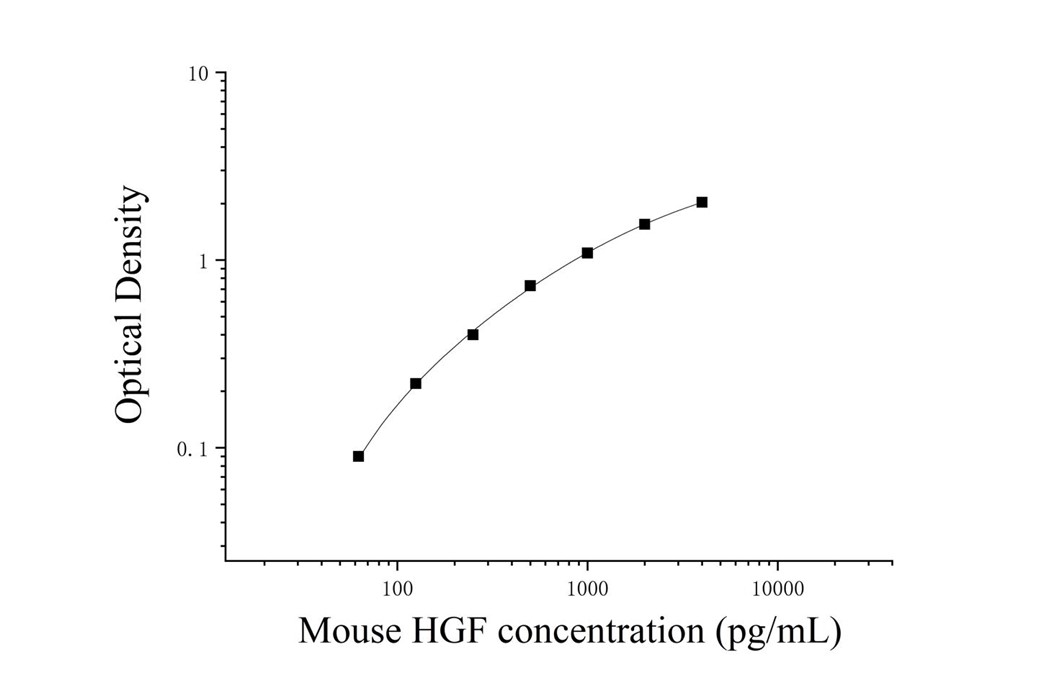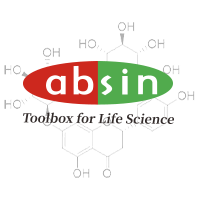Product Details
Product Details
Product Specification
| Usage | Required experimental equipment: 1. Microplate reader (450nm) 2. High-precision pipettes and pipette tips: 0.5-10uL, 5-50uL, 20-200uL, 200-1000uL 3. 37°C incubator 4. Distilled or deionized water Sample handling and requirements: The detection range of the kit is not equivalent to the concentration range of the analyte in the sample. Before the experiment, it is recommended to estimate the analyte concentration in the sample based on relevant literature and conduct preliminary experiments to determine the actual concentration in the sample. If the analyte concentration in the sample is too high or too low, dilute or concentrate the sample appropriately. If the sample type is not listed in the instructions, it is recommended to conduct a preliminary experiment to verify the validity of the test. Serum: Incubate whole blood in a serum separator tube at room temperature for 2 hours or at 4°C overnight, then centrifuge at 1000×g for 20 minutes. Remove the supernatant for analysis, or store at -20°C or -80°C. Avoid repeated freezing and thawing. Plasma: Collect the specimen using EDTA or heparin as an anticoagulant. Centrifuge at 1000×g for 15 minutes at 2-8°C within 30 minutes of collection. Remove the supernatant for analysis, or store at -20°C or -80°C. Avoid repeated freezing and thawing. Tissue homogenate: Rinse the tissue with pre-chilled PBS (0.01M, pH 7.4) to remove residual blood (lysed red blood cells in the homogenate may affect the measurement results). Weigh the tissue and mince. Add the minced tissue to the appropriate volume of PBS (generally a 1:9 weight-to-volume ratio, e.g., 1g of tissue sample to 9mL of PBS. The specific volume can be adjusted according to experimental needs and recorded. It is recommended to add protease inhibitors to the PBS) in a glass homogenizer and grind thoroughly on ice. To further lyse the tissue cells, the homogenate can be sonicated or repeatedly freeze-thawed. Finally, centrifuge the homogenate at 5000×g for 5-10 minutes, and collect the supernatant for analysis. Cell Lysis Buffer: Gently wash adherent cells with ice-cold PBS, then trypsinize and harvest by centrifugation at 1000×g for 5 minutes. Suspension cells can be harvested directly by centrifugation. Wash the harvested cells three times with ice-cold PBS and resuspend in 150-200µL of PBS per 1×10^6 cells (it is recommended to add protease inhibitors to the PBS; if the cell count is very low, reduce the PBS volume appropriately). Disrupt the cells by repeated freeze-thaw cycles or sonication. Centrifuge the extract at 1500×g for 10 minutes at 2-8°C, and remove the supernatant for testing. Cell culture supernatant: Centrifuge at 1000×g for 20 minutes, remove the supernatant, and test immediately. Alternatively, store the supernatant at -20°C or -80°C, but avoid repeated freezing and thawing. Other biological samples: Centrifuge at 1000×g for 20 minutes, remove the supernatant, and test immediately. Sample Appearance: The sample should be clear and transparent, and suspended matter should be removed by centrifugation. Sample Storage: Samples collected for testing within one week can be stored at 4°C. If testing is not possible, aliquot the sample into a single-use amount and freeze at -20°C (for testing within one month) or -80°C (for testing within six months). Avoid repeated freezing and thawing. Hemolysis of the sample can affect the final test results, so hemolyzed samples are not suitable for this test. Sample Dilution Scheme: Please estimate the sample concentration range in advance. If your test sample requires dilution, the reference dilution scheme is as follows: 100-fold dilution: One-step dilution. Add 5 μL of sample to 495 μL of universal diluent for a 100-fold dilution. 1000-fold dilution: Two-step dilution. Add 5 μL of sample to 95 μL of universal diluent for a 20-fold dilution. Then, add 5 μL of the 20-fold diluted sample to 245 μL of universal diluent for a 50-fold dilution, for a total of 1000-fold dilution. 100,000-fold dilution: Three-step dilution. Add 5 μL of sample to 195 μL of universal diluent and dilute it 40-fold. Then, add 5 μL of the 40-fold diluted sample to 245 μL of universal diluent and dilute it 50-fold. Finally, add 5 μL of the 2000-fold diluted sample to 245 μL of universal diluent and dilute it 50-fold, for a total dilution of 100,000-fold. For each dilution step, the sample volume should be at least 3 μL, and the dilution factor should not exceed 100-fold. Mix thoroughly after each dilution step to avoid foaming. Pre-test Preparation: 1. Remove the test kit from the refrigerator 10 minutes in advance and equilibrate to room temperature. 2. Prepare the standard working solution gradient: Add 1 mL of universal diluent to the lyophilized standard. Let stand for 15 minutes to completely dissolve, then gently mix (concentration 4000 pg/mL). Then dilute to the following concentrations: 4000 pg/mL, 2000 pg/mL, 1000 pg/mL, 500 pg/mL, 250 pg/mL, 125 pg/mL, 62.5 pg/mL, and 0 pg/mL. Serial dilution method: Add 500 μL of universal diluent to each of seven EP tubes. Pipette 500 μL of the 4000 pg/mL standard working solution into the first EP tube and mix thoroughly to make a 2000 pg/mL standard working solution. Repeat this procedure for subsequent tubes. The last tube serves as a blank well; there is no need to pipette liquid from the penultimate tube. See the figure below for details. 3. Preparation of Biotinylated Detection Antibody Working Solution: 15 minutes before use, centrifuge 100 μL of concentrated biotinylated detection antibody at 1000 × g for 1 minute. Dilute the 100 μL concentrated biotinylated detection antibody to a working concentration of 1 μL with universal diluent (e.g., 10 μL concentrate + 990 μL universal diluent). Prepare and use immediately. 4. Preparation of Enzyme Conjugate Working Solution: 15 minutes before use, centrifuge 100 μL of concentrated enzyme conjugate at 1000 × g for 1 minute. Dilute the 100 μL concentrated enzyme conjugate to a 1 μL working concentration with universal diluent (e.g., 10 μL concentrate + 990 μL universal diluent). Prepare freshly for use. 5. Preparation of 1 μL Wash Solution: Add 10 mL of 20 μL Wash Solution to 190 mL of distilled water. (Concentrated wash solution removed from the refrigerator may crystallize; this is normal. Allow to stand at room temperature until the crystals have completely dissolved before preparing.) Procedure: 1. Remove the desired strips from the aluminum foil bag after equilibration at room temperature for 10 minutes. Seal the remaining strips in a ziplock bag and return them to 4°C. 2. Sample Addition: Add 100 μL of sample or standard of varying concentrations to the corresponding wells. Add 100 μL of universal diluent to the blank wells. Cover with a film sealer and incubate at 37°C for 60 minutes. (Recommendation: Dilute the sample to be tested at least 1-fold with universal diluent before adding it to the plate. This will minimize matrix effects on the test results. The sample concentration should be multiplied by the dilution factor when calculating the final sample concentration. It is recommended to run replicates for all samples and standards.) 3. Biotinylated Antibody Addition: Remove the plate and discard the liquid. Do not wash. Add 100 μL of biotinylated detection antibody working solution directly to each well. Cover with a film sealer and incubate at 37°C for 60 minutes. 4. Wash: Discard the liquid and add 300 μL of 1x wash buffer to each well. Let stand for 1 minute. Shake off the wash buffer and pat dry on absorbent paper. Repeat this process three times (a plate washer can also be used). 5. Add Enzyme Conjugate Working Solution: Add 100 μL of enzyme conjugate working solution to each well, cover with a film sealer, and incubate at 37°C for 30 minutes. 6. Wash: Discard the solution and wash the plate five times according to the procedure in step 4. 7. Add Substrate: Add 90 μL of substrate (TMB) to each well, cover with a film sealer, and incubate at 37°C in the dark for 15 minutes. 8. Add Stop Solution: Remove the plate and add 50 μL of stop solution directly to each well. Immediately measure the OD value of each well at 450 nm. Calculation of Experimental Results: 1. Calculate the average OD value of the standard and sample replicates and subtract the OD value of the blank well as a correction value. Plot a standard curve for the four-parameter logistic function on double-logarithmic graph paper with concentration as the horizontal axis and OD value as the vertical axis. 2. If the sample OD value is higher than the upper limit of the standard curve, dilute the sample appropriately and re-measure it. Multiply the sample concentration by the corresponding dilution factor when calculating the sample concentration.
 Kit Performance: 1. Repeatability: Intra-assay coefficient of variation (CV) less than 10%, inter-assay coefficient of variation (CV) less than 10%. 2. Recovery: Mouse HGF was spiked into serum, plasma, and cell culture supernatant of healthy mice at three different concentrations, and the recovery was calculated.
Sensitivity |
32.3 pg/mL |
Theory |
This kit uses a double-antibody sandwich enzyme-linked immunosorbent assay (ELISA). Sample, standard, biotin-labeled detection antibody, and HRP conjugate are sequentially added to microwells pre-coated with mouse hepatocyte growth factor (HGF) capture antibody. After incubation and washing, the sample is developed using the substrate TMB. TMB converts to blue under the catalysis of HRP and to yellow under the action of acid. The intensity of the color is positively correlated with the amount of mouse hepatocyte growth factor (HGF) in the sample. The absorbance (OD) is measured at 450 nm using a microplate reader to calculate the sample concentration. |
Source |
Mouse |
Synonym |
Mouse Hepatocyte Growth Factor ELISA Kit |
Detection Type |
Double antibody sandwich method |
Description |
Specificity: It can detect mouse HGF in samples and has no significant cross-reactivity with its analogs. |
Composition |
Background |
Hepatocyte growth factor (HGF), also known as scatter factor (SF), is a paracrine cell growth, motility, and morphogenetic factor. It is secreted by mesenchymal cells and targets, primarily epithelial and endothelial cells, but also hematopoietic progenitor cells and T cells. It plays a crucial role in embryonic organ development. Upon binding to the proto-oncogenic c-Met receptor, it regulates cell growth, motility, and morphogenesis by activating a tyrosine kinase signaling cascade. |
General Notes |
1. Strictly adhere to the specified incubation time and temperature to ensure accurate results. All reagents must be at room temperature (20-25°C) before use. Refrigerate reagents immediately after use. |
2. Improper plate washing may result in inaccurate results. Ensure that all liquid in the wells is aspirated thoroughly before adding substrate. Do not allow the wells to dry out during incubation. 3. Remove any residual liquid and fingerprints from the bottom of the plate, as this will affect the OD value. 4. The substrate developer solution should be colorless or very light in color. Do not use substrate solution that has turned blue. 5. Avoid cross-contamination of reagents and specimens to prevent erroneous results. 6. Avoid direct exposure to strong light during storage and incubation. 7. Do not expose any reagents to bleaching solvents or the strong fumes emitted by bleaching solvents. Any bleaching agent will destroy the biological activity of the reagents in the kit. 8. Do not use expired products, and do not mix components with different product numbers and batches. 9. Recombinant proteins from sources other than the kit may not be compatible with the antibodies in this kit and will not be recognized. 10. If there is a possibility of disease transmission, all samples should be managed properly and samples and testing devices should be handled according to prescribed procedures. Storage Temp. |
If the unopened kit is stored at 4°C, the shelf life is 6 months. |
Test Range |
6.25-400pg/mL |
Applications |
Serum, plasma, tissue homogenate, cell lysate, cell culture supernatant and other biological fluids |
|


